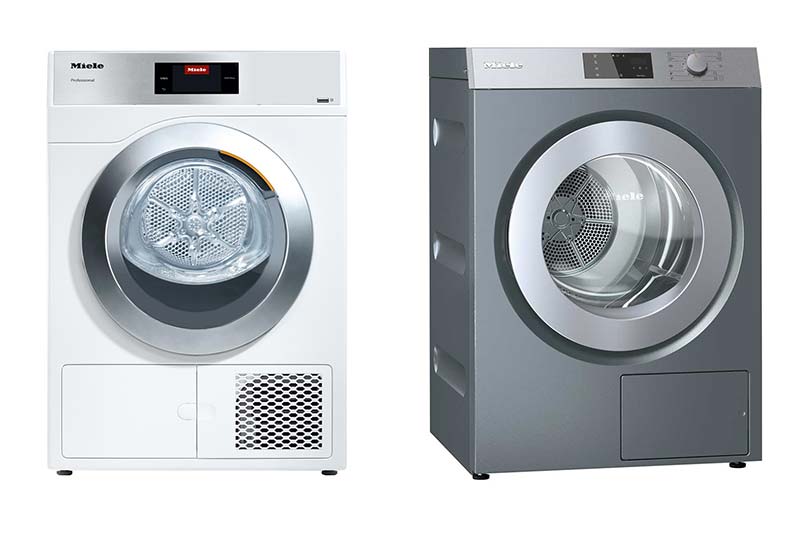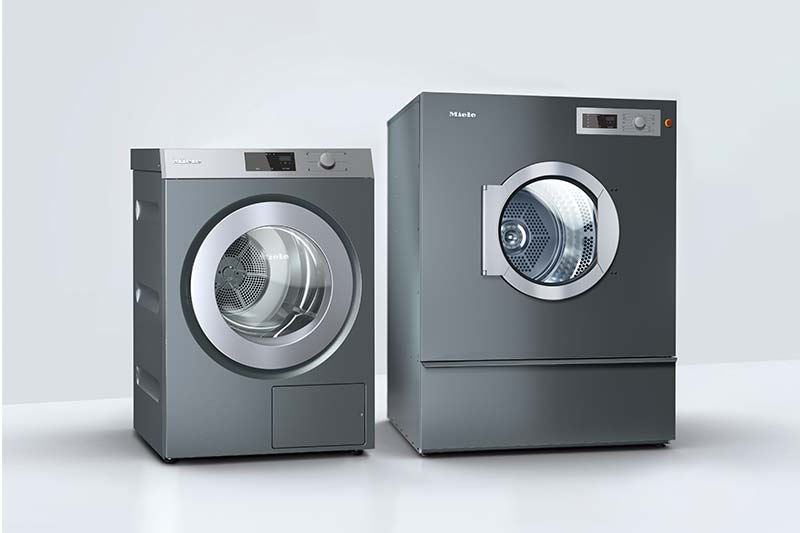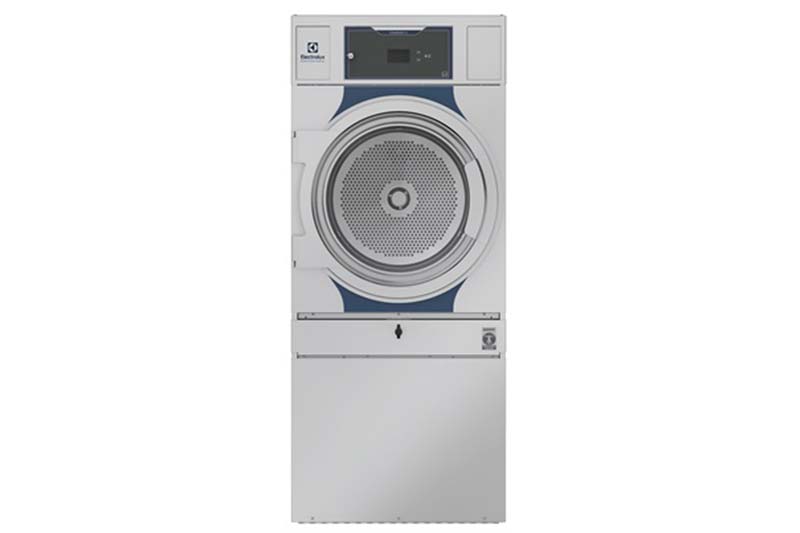What is the difference between Vented, Condenser and Heat Pump tumble dryers? Are gas tumble dryers better than electric tumble dryers for businesses? Are modern commercial tumble dryers more energy efficient?
These are examples of the type of questions we are asked regularly, and we thought it may be beneficial to share a list of FAQs.

FAQs
A commercial tumble dryer is designed to cope with the demanding laundry requirements of commercial premises, such as Care Homes, NHS/Hospitals, Housing Associations, Hotels, Leisure, Sports Clubs, Facilities Management, Construction, Hospitality and Animal Care. They can be electric, gas or steam powered, and a good commercial tumble dryer is robust, reliable, efficient and built to last.
In capacity, commercial tumble dryers can range from as small as 6KG drum capacity and go up to 44kg and above. In terms of overall size, they can take up less than half a square metre of floor space for 6kg-8kg capacity, and the size increases with the capacity requirements.
There are three main types of commercial tumble dryers available – vented, condenser and heat pump.
Tumble dryers remove the moisture from the laundry, but how they do that differs between the type of dryer.
- A vented tumble dryer heats the air to evaporate the moisture and sends it outside the building through a vent in the external wall. It needs to be installed near an external wall.
- A condenser dryer also evaporates the moisture but then condenses it into a liquid which is then removed, usually into a 1.5” appliance upstand drain. It does not need to be installed next to an external wall.
- A heat pump dryer acts like a condenser dryer in depositing moisture in a tank for removal, again usually into a 1.5” appliance upstand drain. They also recycle the dry air via a refrigerant loop system which makes them very energy efficient. It does not need to be installed next to an external wall.
Yes, the leading manufacturers continually develop their commercial equipment to be more efficient and better for the environment. Technological advances mean modern commercial tumble dryers are much more energy efficient that older models.
Minimising energy costs and improving sustainability is critically important and, without doubt, the most energy efficient and sustainable type are heat-pump dryers. These operate at lower temperatures and use a closed-loop heat exchange to recirculate air, resulting in significant energy savings. Miele Professional heat pump tumble dryers are the market leaders in terms of technology and efficiency, and the energy consumption for the PDR507 heat pump model is over 65% down compared to their previous condenser model (PT7135c).
Gas powered tumble dryers are commonly used in commercial premises and can be more efficient, have lower energy costs than electric models, and have quicker cycle times. However they do have a naked flame with combustible material (lint/fluff) in close proximity which can cause a fire if the dryer, so regular servicing and maintenance is essential. There are strict legal compliance requirements around correct installation and ongoing running of the machine, such as Annual Gas Safety Inspections (by a Gas Safe Engineer certified for commercial laundry equipment); specific air extraction guidance (ducting); and air intake requirements in the room to ‘make up’ for air removed by the dryer (ventilation). This is resulting in more commercial businesses moving to electric powered tumble dryers.
Regular servicing and maintenance is essential to help keep your machine in the best possible condition, to reduce breakdowns, to save cost, and to keep it safe and compliant. Build up of lint/fluff is one of the biggest issues and this can block the airflow, impacting efficient and performance, and can create a fire risk. Regular servicing by a specialist commercial laundry support company like JTM Service, together with user maintenance in line with the operating instructions, will mitigate these issues and improve performance.
Space is often at a premium in a commercial setting, and using commercial tumble dryers with a small footprint is a great solution. Commercial tumble dryers can fit in less than 0.5m² of floor space, and with a solution like Miele’s Little Giant range of commercial tumble dryers, they are stackable either on a washing machine or another dryer. This means you can have both a washer and dryer, or two dryers, with less than a 0.5m2 footprint.
Using a specialist commercial laundry equipment partner, who invest in training and development of their engineers, as well as partnering with leading professional manufacturers, is essential to improving the longevity of your commercial tumble dryer. They will supply and install the correct equipment; service and maintain it to the highest standards; and provide advice and support to help the user maximise performance and efficiency. If your tumble dryers faults, you should immediately report it to your support company (e.g. JTM Service on 0113 2572221) who will advise if you can continue to use whilst waiting for an engineer to attend. If you continue to run when advised not to, you run the risk of damaging the machine further.
There are a number of ways to be more energy efficient. Airflow is key to efficient running of the dryer, therefore fluff should be removed from filters after each cycle, and ventilation should be cleaned and any vent ducting kept short and smooth to minimise restrictions on airflow. Load size is important – underload and you will not be running efficiently; overload and you will get a lower quality of drying as air cannot flow. Always spin thoroughly in the washing machine first as this reduces drying time requirements. For more tips see https://jtmservice.co.uk/14-tips-for-energy-savings-in-a-commercial-laundry-or-kitchen/


If you have any other questions about commercial tumble dryers, please do contact us and we’d be delighted to help. Our contact details are 0113 2572221 and info@jtmservice.co.uk

